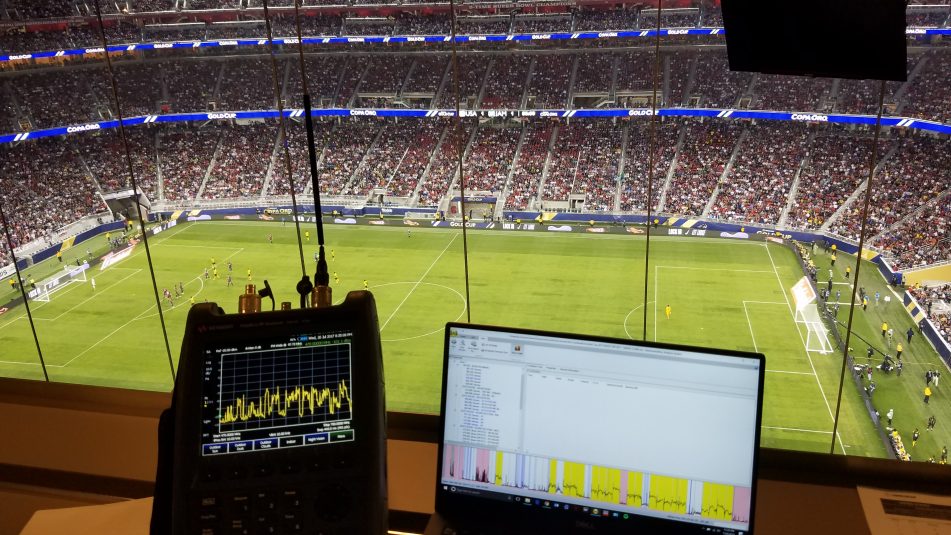The CONCACAF Gold Cup Moves Into a New Spectrum Landscape
Story Highlights
The multi-event series illustrates the future complexity of frequency coordination
According to Kasey Gchachu, PWS project manager and RF technician at the series, a few cities presented especially challenging environments — notably, Los Angeles and Santa Clara — because of the density of digital television in the area. Combined with an RF environment in flux, that meant that frequency coordination had to start as long as two months ahead of the series.
The major networks informed PWS about the type of wireless-microphone systems and the frequencies they expected to deploy, using a web portal set up for that purpose. PWS coordinated the compiled frequency lists with the local chapters of the Society of Broadcast Engineers and submitted all the SBE-approved frequencies to the FCC for final confirmation.
“At each venue, we conducted a sweep of the area to ensure that the frequencies allocated were available,” Gchachu explains. “Once [that was] complete, we set up camp for the media and to handle any last-minute requests before moving on to the next venue. In addition, we had to make sure we stayed clear of all public-safety frequencies, which differed depending on what city we were in.”
There were a few bumps in the road. For instance, some overseas broadcasters showed up with 700-MHz gear, a frequency range that was closed to commercial RF use more than four years ago.
“We explain to them that they can’t use that frequency range in the U.S. and that they’ll have to make other arrangements,” Gchachu says. That usually means resorting to a hard-wired microphone system, which he notes that most visiting broadcasters usually have with them as backup. “We’ll try to recommend alternatives, but it’s hard to find a rental house open on the weekends at the last minute.”
He adds that he has begun to notice broadcast crews arriving with a more diverse array of frequency capabilities, most opting to move down into the VHF range. The larger cities have not yet been touched by new spectrum owners, like Verizon and T-Mobile, lighting up their spectrum. “But that is happening now in smaller cities and towns, and that’s going to get noticed as we move into the college football season,” Gchachu says. “We’re going to be very busy in the near future.”

